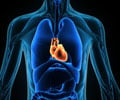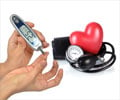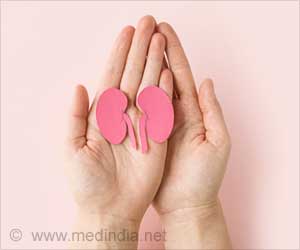A new study has revealed that most adults with conditions such as coronary heart disease, stroke, diabetes or others that raise their risk for cardiovascular complications also have hypertension.
A new study has revealed that most adults with conditions such as coronary heart disease, stroke, diabetes or others that raise their risk for cardiovascular complications also have hypertension (high blood pressure). The study, which examined American adults, found that nearly three-fourth of them with these conditions also had high blood pressure.
Although about 75 percent of these individuals are being treated for hypertension, only about 30 to 50 percent are reaching BP goals.“Recent estimates indicate little change in the prevalence of hypertension, and, although there seem to be some recent improvements in treatment and control rates, hypertension in many persons remains inadequately controlled,” the researchers said.
Nathan D. Wong, Ph.D., of the University of California, Irvine, and colleagues looked at data from adults participating in the National Health and Nutrition Examination Survey, a nationally representative survey conducted by the Centres for Disease Control and Prevention.
In 2003 and 2004, 4,646 adults provided demographic and socio-economic information and underwent laboratory and physiological testing (including BP measurements).
It was found that a total of 1,671 (31.4 percent) of the participants had hypertension, defined as a systolic (top number) BP of at least 140 milligrams of mercury (130 milligrams of mercury in those with diabetes or chronic kidney disease) or a diastolic (bottom number) BP of at least 90 milligrams of mercury (80 milligrams of mercury in those with diabetes or chronic kidney disease), or as reporting use of a BP–lowering medication.
The condition was more common in older and black adults. A total of 68.5 percent of those with hypertension were being treated and 52.9 percent of those had their hypertension under control.
Advertisement
Among individuals with these conditions, 75 percent or more were being treated for hypertension, but only 30 to 50 percent of those in treatment reached goal levels for BP (140/90 milligrams of mercury for most patients, or 130/80 milligrams of mercury for patients with diabetes or chronic kidney disease). Goal attainment rates were particularly low for persons with stroke (34.9 percent), heart failure (48.8 percent), peripheral arterial disease (46.7 percent) and coronary artery disease (50.3 percent).
“Poor control rates of systolic hypertension remain a principal problem that further compromises the already high cardiovascular disease risk” in these individuals, the authors said.
“Moreover, given recently released recommendations to reduce the blood pressure goal to less than 130/80 milligrams of mercury for persons with coronary artery disease and other high-risk conditions, our hypertension control rates would be even lower and a greater distance from the goal for these persons if the new criteria are applied.
“These high-risk persons with low rates of hypertension control represent an urgent need for intensified efforts to achieve blood pressure control,” they said.
The report is published in the December 10/24 issue of Archives of Internal Medicine, one of the JAMA/Archives journals.
Source-ANI
KAR/M











